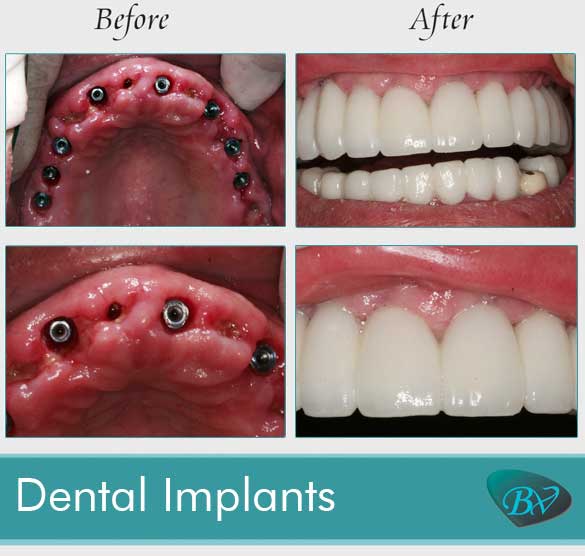Rumored Buzz on Dental Sense
Rumored Buzz on Dental Sense
Blog Article
The Single Strategy To Use For Dental Sense
Table of ContentsThe Buzz on Dental Sense7 Easy Facts About Dental Sense ExplainedTop Guidelines Of Dental Sense6 Simple Techniques For Dental Sense
are clinical devices operatively implanted right into the jaw to recover a person's capacity to chew or their look. They supply support for synthetic (fake) teeth, such as crowns, bridges, or dentures. When a tooth is lost due to injury or illness, a person can experience issues such as quick bone loss, malfunctioning speech, or changes to chewing patterns that lead to discomfort.Dental dental implant systems include a dental implant body and oral implant abutment and may additionally include an abutment fixation screw. Dental implants. The dental implant body is operatively placed in the jawbone in location of the tooth's origin. The oral implant joint is typically affixed to the implant body by the abutment addiction screw and prolongs with periodontals into the mouth to support the connected artificial teeth
(https://dentalsense.godaddysites.com/f/transform-your-smile)Structure of The Oral Implant System selecting dental implants, talk to your dental service provider regarding the potential benefits and threats, and whether you are a candidate for the treatment. Points to consider: Your general health is a crucial consider figuring out whether you are a good candidate for dental implants, the length of time it will require to recover, and the length of time the implant may stay in place.
Cigarette smoking may impact the healing process and reduce the lasting success of the implant. The healing process for the implant body may take a number of months or longer, during which time you usually have a momentary abutment in location of the tooth. the dental implant procedure: Carefully follow the dental health guidelines offered to you by your oral service provider.
The 20-Second Trick For Dental Sense
Implant failure can cause the requirement for an additional operation to fix or change the dental implant system. Restores the capability to eat Brings back cosmetic appearance Aids maintain the jawbone from diminishing as a result of bone loss Maintains the health of the surrounding bone and gums Aids maintain adjacent (nearby) teeth stable Enhances high quality of life Damage to bordering all-natural teeth throughout dental implant placement Injury to the surrounding tissues throughout surgical treatment, such as sinus perforation Injury throughout surgical procedure (for example, fracture of surrounding jawbone) Inadequate feature, such as really feeling like the teeth do not attack together typically A sensation that the tooth hangs or turning in position resulting from an abutment screw loosening up Implant body failing (looseness of the implant body) due to systemic infection, which might be more probable in clients with unrestrained diabetes mellitus because of neighborhood infection in bone and periodontals supporting the dental implant body because of delayed healing, which might be much more likely in individuals that smoke Difficulty cleaning up the periodontals around the implant, leading to bad dental health Without treatment gum disease Post-surgical pins and needles as a result of nerve impingement or damage Always alert health and wellness treatment companies and imaging service technicians that you have oral implants before any kind of magnetic resonance imaging (MRI) or x-ray procedures.
FDA is not familiar with any type of adverse occasions reported for MRI or x-ray procedures with oral implants. Oral implants systems are normally constructed from materials that adhere to global consensus standards of the International Organization for Standardization (ISO) or ASTM International. These standards have details of what makes a safe material.

An oral implant is a framework that changes a missing tooth. With screw-like tools, the surgeon inserts an implant into the jawbone, and it acts as an anchor for a fabricated tooth, called a crown.
Get This Report on Dental Sense
Some individuals are not eligible for dental implant surgical procedure. It is for dental specialists to operate individuals with: acute illnessuncontrollable metabolic diseasebone or soft tissue disease or infectionIf these concerns are resolved, a person can have the surgery. In, oral cosmetic surgeons refrain from operating on people with: If people with any one of the above undergo oral implant surgery, there is a greater danger of the dental implant stopping working.

Oral dental implant surgical treatment is a tailored process. Provide you time to recover. Attach the blog post and last crown, bridge or denture.
Next off, your doctor will very carefully put the oral implant right into your jaw. Finally, your cosmetic surgeon will rearrange your periodontals and shut the laceration with stitches. If your implant is near the front of your mouth, your dental practitioner will certainly make a temporary tooth for you to put on till you recover. This way, you won't have a gap in your smile while you recuperate.
Not known Facts About Dental Sense
Throughout the recovery phase, your jawbone ought to fuse to the oral implant. This process can take anywhere from 3 to 9 months.
When your implant heals, your dental expert can attach the abutment (tiny port post) and your final reconstruction (crown, bridge or denture). This generally takes about one hour to complete and might need a 2nd small surgical procedure. You should not feel any type of discomfort during your oral implant treatment because your provider will use drug to numb your gums.
Report this page